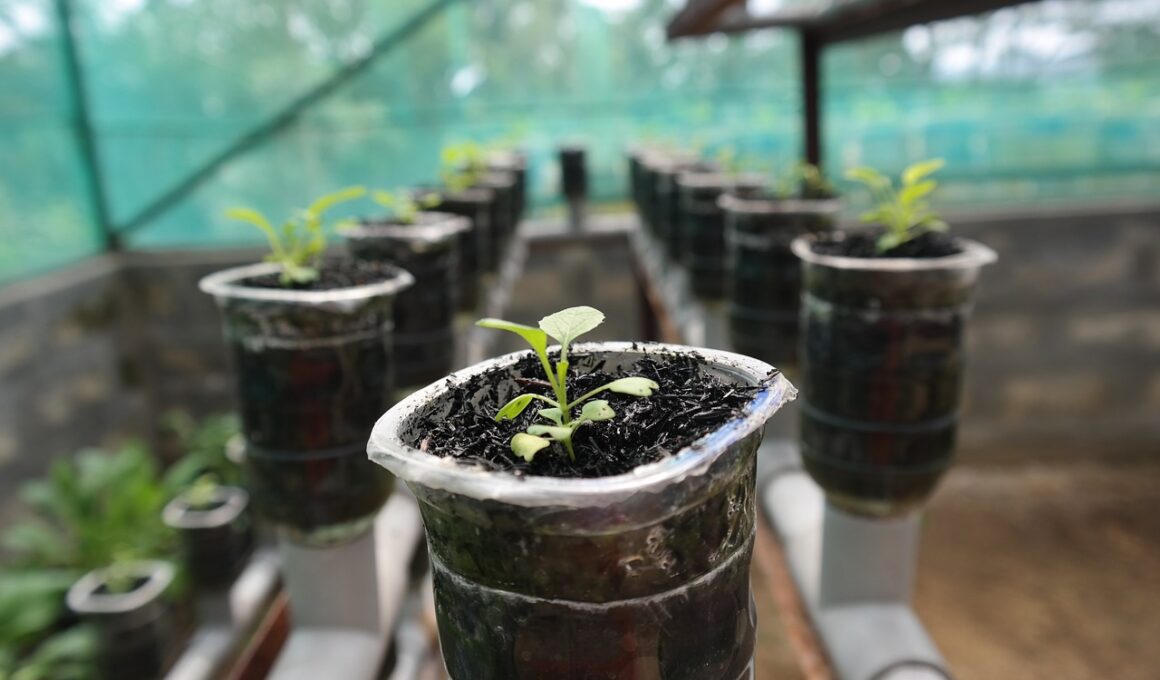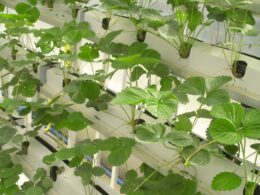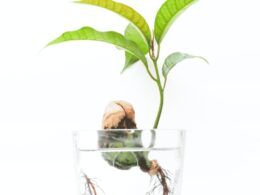Are you considering starting a hydroponic garden? Hydroponics is a great way to grow plants without soil and with less water, but there is a potential risk of mold growth in your system. Mold can not only damage your plants but can also pose a health risk to you and your family.
It is important to understand the risk of mold in hydroponic systems and how to prevent and treat it to maintain a safe and healthy environment for your plants and yourself. In this article, we will explore the potential for mold growth in hydroponic systems, how to identify and prevent it, and best practices for maintaining a mold-free system.
By following these guidelines, you can ensure the success of your hydroponic garden and keep it free from harmful mold. So let’s dive in and learn about the risks and solutions to mold growth in hydroponics.
Understanding the Risk of Mold in Hydroponic Systems
You need to be aware of the risk of mold in your hydroponic system so that you can take the necessary steps to prevent it from ruining your plants. Common causes of mold in hydroponics include high humidity, poor air circulation, and lack of cleanliness. Without proper prevention, mold can quickly spread and harm your plants.
To prevent mold in your hydroponic system, it’s important to maintain proper humidity levels and ensure that there is adequate air circulation. You can also clean your system regularly to remove any potential sources of mold. It’s also recommended to use a good quality air filter to help reduce the number of mold spores in your growing area.
The effect of mold on plant growth in hydroponics can be devastating. Mold can cause stunted growth, discoloration, and even death of your plants. It’s important to take the necessary precautions to prevent mold from taking hold in your hydroponic system so that your plants can thrive and reach their full potential.
Identifying Mold in Hydroponic Systems
Spotting fuzzy patches of unwanted growth in a closed hydroponic system can be a challenge, but there are telltale signs that can help you identify if your plants are at risk of mold. Here are three signs to look out for:
-
Discoloration: If you notice any unusual discoloration on your plants, it may be a sign of mold. Keep an eye out for brown, yellow, or black spots on the leaves or stems.
-
Musty Smell: A musty or earthy odor is a common indicator of mold growth. If you detect this smell in your hydroponic system, it’s important to take action immediately to prevent the mold from spreading.
-
Fuzzy Texture: Mold can often appear as a fuzzy, white or gray growth on the surface of your plants. If you see this type of growth, it’s crucial to remove it as soon as possible to prevent the mold from spreading to other areas.
Identifying mold in your hydroponic system is just the first step in mold prevention and ensuring the health of your plants. It’s important to take measures to prevent mold growth, such as maintaining proper humidity levels and providing adequate ventilation.
In addition, regularly inspecting your plants and cleaning your hydroponic system can help prevent mold from taking hold. By taking these steps, you can keep your hydroponic system healthy and thriving.
Preventing Mold Growth in Hydroponic Systems
Preventing the spread of unwanted growth is crucial in hydroponic systems. Mold can be a common issue in closed systems, but it can be easily prevented with proper ventilation and maintaining optimal humidity levels.
You can prevent contamination by ensuring that your hydroponic system is well-ventilated, allowing air to circulate freely within the system. Proper air circulation is essential to prevent the buildup of moisture in your hydroponic system. When moisture builds up, it creates an ideal environment for mold growth.
In addition to ensuring proper ventilation, you can maintain optimal humidity levels by keeping the water temperature and pH levels in check. This will help to prevent the growth of mold in your hydroponic system.
Preventing mold growth in your hydroponic system is important for the longevity of your plants. By implementing proper ventilation and maintaining optimal humidity levels, you can ensure that your plants stay healthy and free from unwanted growth. Remember to keep a close eye on your system and make adjustments as necessary to prevent contamination.
With these simple steps, you can enjoy a thriving hydroponic garden without the worry of mold.
Can Mold Growth Affect the Survival of Plants in a Hydroponic System?
Mold growth poses a considerable threat to the survival of plants in a hydroponic system. As molds thrive in warm and damp environments, they can quickly multiply within the nutrient-rich solution used in hydroponics. Once present, molds inhibit the plant’s ability to absorb nutrients, leading to stunted growth and reduced productivity. Ensuring proper ventilation, maintaining optimal humidity levels, and regularly inspecting and cleaning the system are vital precautions against plants and hydroponics survival issues caused by mold growth.
Treating Mold in Hydroponic Systems
Now that we know how to prevent unwanted growth in our closed hydroponic systems, let’s talk about effective ways to treat any mold that may appear. Mold prevention is key, but sometimes it can still grow in our systems. Here are some treatment techniques you can use to combat mold:
-
Remove affected plant material: The first step in treating mold is to remove any affected plant material. This will help prevent the mold from spreading to other plants in your system.
-
Use a hydrogen peroxide solution: Mix one part hydrogen peroxide with ten parts water and use this solution to clean affected areas. This will help kill the mold and prevent it from coming back.
-
Increase air circulation: Mold thrives in humid and stagnant environments, so increasing air circulation in your hydroponic system can help prevent mold growth.
-
Use beneficial bacteria: Certain strains of beneficial bacteria can help prevent mold growth in your hydroponic system. Adding these bacteria to your system can help keep mold at bay.
Remember, prevention is always better than treatment when it comes to mold in hydroponic systems. But if mold does appear, these treatment techniques can help get rid of it and prevent it from coming back. Keep a close eye on your system and take action at the first sign of mold growth.
Best Practices for Maintaining a Mold-Free Hydroponic System
If you want to maintain a mold-free hydroponic system, there are a few best practices that you should follow. Regular monitoring and maintenance are essential, as well as proper hygiene and sanitation.
It’s also important to choose the right type of hydroponic system that meets your specific needs. By implementing these practices, you can keep your system running smoothly and prevent mold growth.
Regular Monitoring and Maintenance
You need to regularly check and maintain your hydroponic system to ensure it stays clean and healthy. This will help you avoid any potential issues with mold growth in your plants. Here are some tips to help you keep your hydroponic system mold-free:
- Conduct water quality testing regularly to make sure the water isn’t contaminated.
- Monitor the humidity levels in your grow space to avoid excess moisture that can promote mold growth.
- Inspect your plants and equipment frequently to identify any signs of mold and address them promptly.
- Ensure that your system is properly ventilated to prevent stagnant air that can encourage mold growth.
By following these simple steps, you can prevent the growth of mold in your hydroponic system and ensure the health of your plants. Remember the importance of consistency and regular maintenance to keep your system running smoothly.
Proper Hygiene and Sanitation
To maintain a clean and healthy environment for your plants, it’s crucial to prioritize proper hygiene and sanitation practices in your hydroponic system. This means regularly cleaning and disinfecting all equipment, including reservoirs, pumps, and grow trays.
It also includes washing your hands and wearing gloves when handling plants, as well as ensuring that all nutrients and water are properly mixed and balanced to prevent the growth of harmful bacteria.
Hygiene maintenance and sanitation practices are essential to preventing the growth of mold and other harmful microorganisms in your hydroponic system. Without proper cleaning and disinfection, mold can quickly spread and cause damage to your plants.
By taking the time to regularly clean and disinfect your equipment, as well as following proper hand-washing and nutrient-mixing procedures, you can help ensure that your plants stay healthy and free from mold and other harmful microorganisms.
Choosing the Right Hydroponic System for Your Needs
Now that you know how important hygiene and sanitation are in preventing mold growth in your hydroponic system, let’s talk about choosing the right system for your needs.
There are several types of hydroponic systems available, each with their own benefits and drawbacks.
First, there is the deep water culture (DWC) system, which is great for beginners because it’s easy to set up and maintain. However, because the roots are constantly submerged in water, there’s a higher risk of mold growth if proper sanitation measures aren’t taken.
Second, the ebb and flow system is another popular choice, where the nutrient solution floods the plant roots periodically, allowing for good aeration. However, this system requires more maintenance and can be prone to leaks.
Lastly, the drip system is great for larger plants and uses a drip line to deliver nutrient solution to the roots. This system is easy to set up and maintain, but can be a bit more expensive than the other two options.
No matter which hydroponic system you choose, make sure to take proper sanitation measures to prevent mold growth. By choosing the right system for your needs and maintaining it properly, you can enjoy all the benefits of hydroponic gardening without the worry of mold.
Frequently Asked Questions
Can mold in hydroponic systems be harmful to human health?
To ensure that mold in hydroponic systems isn’t harmful to human health, it’s important to focus on prevention. Proper ventilation is key – allowing fresh air to circulate reduces the humidity and moisture that mold thrives in. Additionally, you should regularly clean and sanitize your hydroponic system to keep it free from mold and other harmful contaminants.
With these simple steps, you can ensure that your hydroponic system is a safe and healthy environment for both you and your plants.
How does the humidity level affect mold growth in hydroponic systems?
To prevent mold growth in hydroponic systems, it’s important to manage the humidity level. High humidity can create the perfect environment for mold to thrive, so it’s essential to keep the humidity between 50-70%.
Humidity management can be achieved through proper ventilation, dehumidifiers, or air conditioning. Other mold prevention techniques include regularly inspecting the system for any signs of mold growth, keeping the system clean and sanitized, and using a mold-resistant growing medium.
By following these simple steps, you can ensure a healthy and safe hydroponic system.
Is it possible to completely eliminate the risk of mold in hydroponic systems?
To prevent mold in your hydroponic system, regular maintenance is key. This includes cleaning and sanitizing the system, ensuring proper air circulation, and monitoring the humidity levels. While it’s possible to minimize the risk of mold, it’s unlikely that you’ll completely eliminate it.
However, taking these preventative measures will greatly reduce the likelihood of mold growth and ensure the safety of your plants. Remember to stay vigilant and stay on top of hydroponic maintenance to keep your system healthy and mold-free.
Are there any natural remedies for preventing or treating mold in hydroponic systems?
If you’re worried about mold in your hydroponic system, there are a few preventative measures you can take. First, make sure your system is well-ventilated to prevent excess humidity.
You can also use organic solutions like neem oil or cinnamon to prevent mold growth. If you do notice mold in your system, don’t panic – there are natural remedies you can use to get rid of it.
One option is to spray a solution of hydrogen peroxide and water onto the affected areas. Another is to sprinkle cinnamon or baking soda onto the mold and let it sit for a few hours before rinsing it off.
With a little bit of attention and care, you can keep your hydroponic system mold-free and healthy.
Can using certain types of hydroponic systems or growing mediums increase the likelihood of mold growth?
Looking for the best hydroponic systems to grow your plants without the risk of mold? There are a few options to consider.
First, try using a top-fed hydroponic system with a nutrient film technique. This method allows for consistent nutrient delivery without soil or other growing mediums that can hold moisture and promote mold growth.
You can also choose a hydroponic system that uses rockwool as a growing medium, as it has good drainage and doesn’t retain moisture.
Of course, prevention is key, so make sure to follow common mold prevention techniques like maintaining proper humidity levels, keeping your system clean, and using good ventilation.
With the right hydroponic system and mold prevention techniques, you can enjoy healthy plants without any worries.
Conclusion
Congratulations on completing this article about mold growth in hydroponic systems! You now have a better understanding of the risks associated with mold growth, how to identify it, and steps you can take to prevent it from occurring in your hydroponic system.
Remember, maintaining a clean and well-ventilated environment, using high-quality materials and nutrients, and regularly checking for and addressing any signs of mold growth can help keep your hydroponic system healthy and thriving.
And if you do notice any mold, don’t panic – there are several treatment options available to help get rid of it.
By following these best practices and staying vigilant, you can enjoy all the benefits that hydroponic gardening has to offer without worrying about mold growth. So get growing and happy planting!









